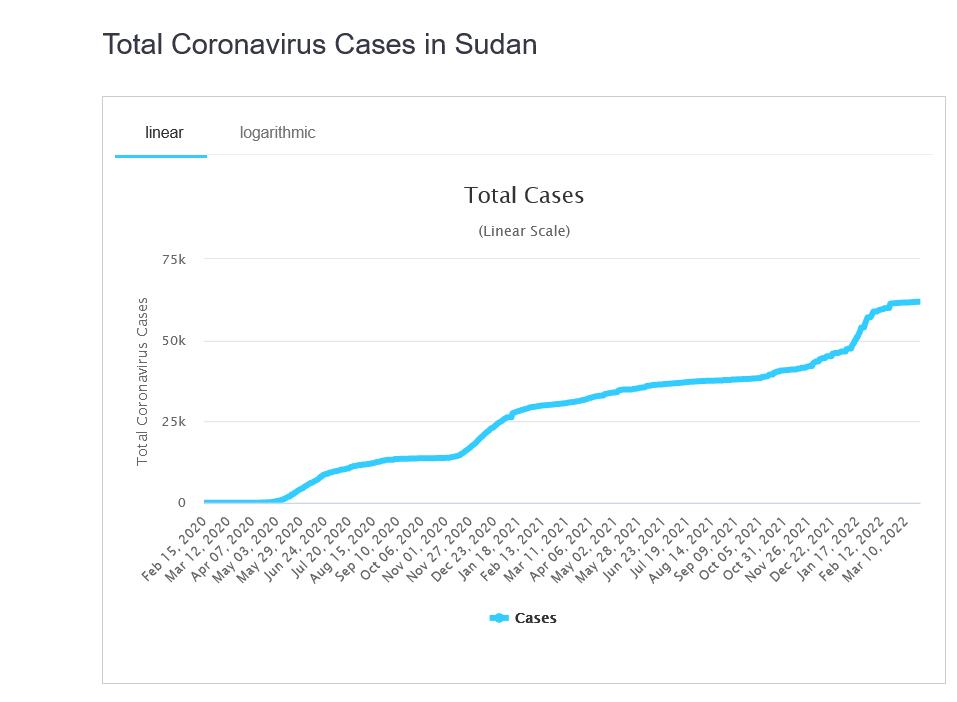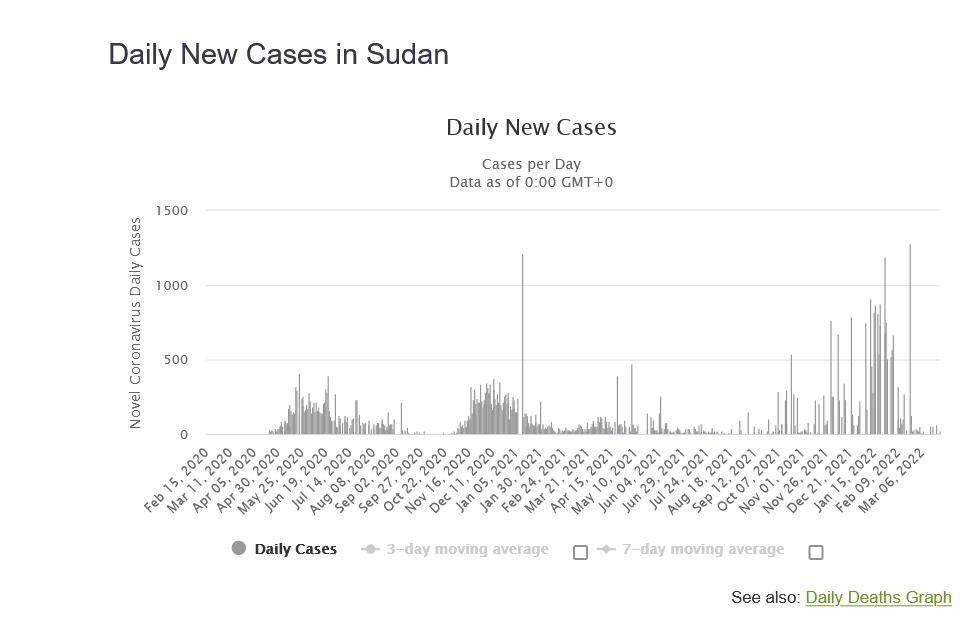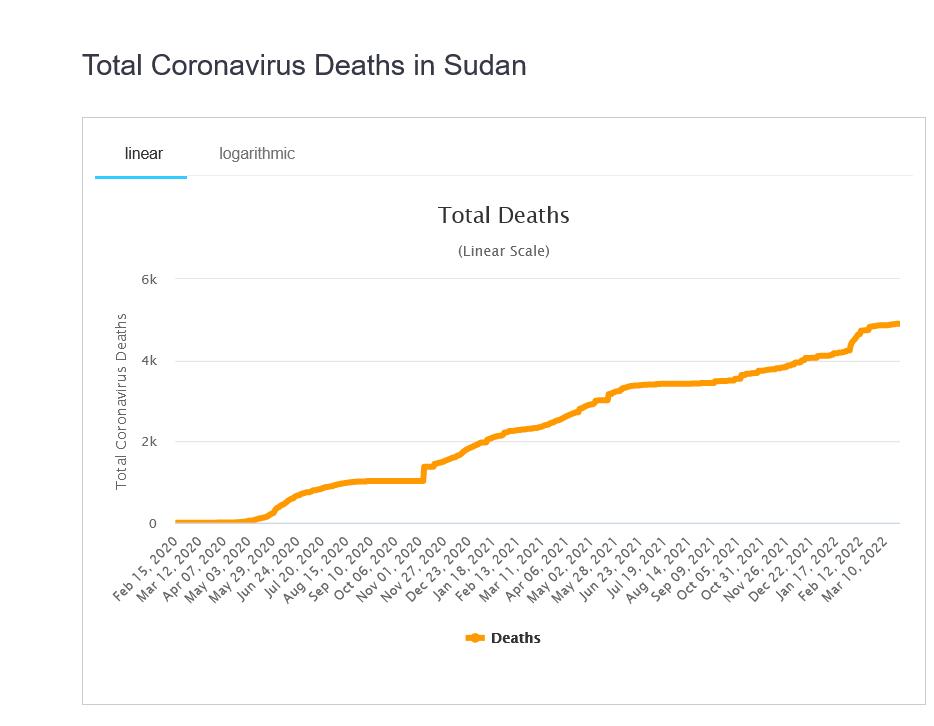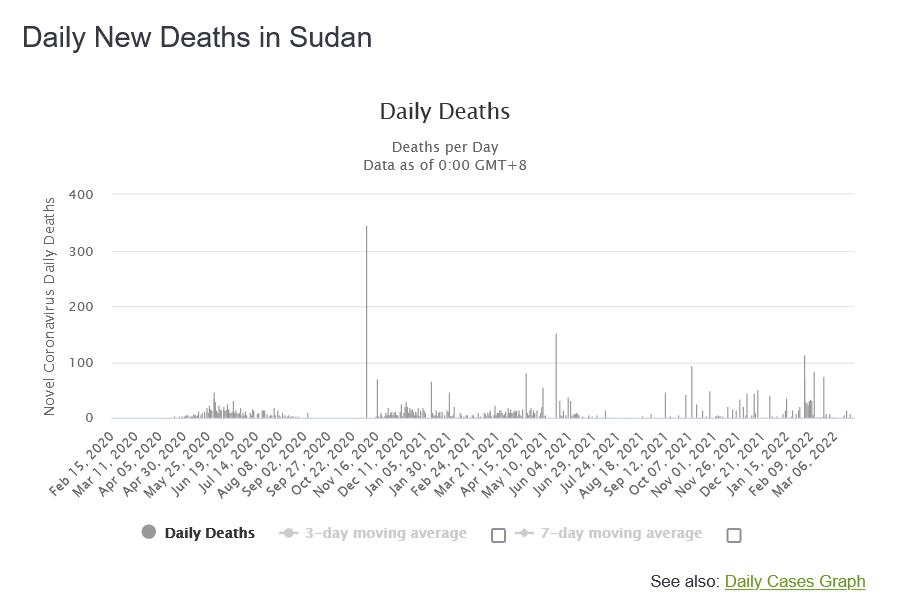
10 minute read
Virus Pandemic (COVID-19) in Sudan
led to the formation of a Transition Government in September 2019, and the power-sharing agreement between the military and civilian forces expected to last 39 months. In addition to the political and economic uncertainty, Sudan, like the rest of the world, has been experiencing the unprecedented social and economic impact of the COVID-19 (coronavirus) pandemic. The COVID-19 shock is expected to be transitory with potential recovery possible in 2021 but the overall adverse economic impact on Sudan will be substantial. The economic impact of COVID-19 includes the increased price of basic foods, rising unemployment, and falling exports. Restrictions on movement are making the economic situation worse, with commodity prices soaring across the country. According to the International Monetary Fund the economic situation has already forecasted an overall economic stagnation in 2020 in Sudan.10 The Transitional government is planned to govern the country during a 39-month transitional period. Social tensions will remain high, as the public remains wary about political and economic uncertainty during the transitional period. The coronavirus (Covid-19) pandemic has deepened economic woes, but prospects will improve in 2021 as US sanctions are removed.11
According to Sudan Economic Outlook (2021) the recent macroeconomic and financial developments indicate that real GDP was estimated to have shrunk by 8.4% in 2020 after shrinking by 2.5% in 2019. The COVID–19 pandemic’s effect on commodity prices, trade, travel, and financial flows contributed to subdued economic activity. Reduced private consumption and investment as well as disruptions in value and supply chains also affected growth. Containment measures such as lockdowns took their toll on the service sector, with 58% of GDP, and the industrial sector, with 22%. Inflation escalated to an estimated 124.9% in 2020, compared with 82.4% in 2019, mainly due to a 118% currency depreciation and monetization of the fiscal deficit. Public revenues decreased by 35% in 2020, while the pandemic spurred a big increase in spending, worsening the fiscal deficit to 12.4% in 2020, compared with 11.3% in 2019. The fiscal deficit, which accounted for 40% of government revenues in 2019, has primarily been financed by advances from the central bank. Reduced demand among Sudan’s major trading partners in the Persian Gulf lowered exports, but imports also declined. As a result, the current account deficit narrowed to 12.6% of GDP from 15.1% in 2019. Private sector credit as a percentage of GDP dropped by 4 percentage points during the first half of 2020, reflecting the pandemic-related economic slowdown. In July 2020, the government adopted an accommodative monetary policy by reducing the cash reserve ratio, boosting credit to private sector to an estimated 12% of GDP at the end of 2020, still below the 14% of GDP it reached in 2019. While non-performing loans decreased from 3.5% in 2019 to 3% in 2020, returns on assets decreased to 1% from 1.8%, reflecting reduced profitability due to the sharp economic contraction. Subdued economic activity increased poverty from 48.3% in 2019 to an estimated 56% in 2020. Sudan’s economy is projected to remain in recession in 2021, with a return to modest growth expected in 2022.12
3.2. The incidence and spread of Corona Virus Pandemic (COVID-19) in Sudan
Sudan, like the rest of the world, has been experiencing the unprecedented social and economic impact of the COVID-19 pandemic. The Sudanese authorities attempted to act quickly in the face of the spreading virus. In March 2020 the Government established a high-level emergency committee to oversee the operations to deal with the COVID-19 pandemic. Sudanese authorities attempted to act quickly in the face of the spreading virus. With the confirmation of the first COVID-19 case in Sudan on March 13, the Government of Sudan declared a ‘state of emergency’. On March 14, 2020, the Government announced closure of schools and prohibition of mass gatherings. Two days later, it closed airports, ports, and land crossings; banned travel between states; and required one-month quarantine for incoming travellers. A partial lockdown was imposed in Khartoum State in mid-March 2020. In April 2020 the government launched a social assistance program to provide in cash and inkind support to households in Khartoum State. Restrictions on movement are expected to make the economic situation worse, with commodity prices soaring across the country. The lockdown was
10Source: See https://www.worldbank.org/en/country/sudan/overview#1 (Last Updated: Sep 29, 2021) (Accessed 16 October 2021). 11Source: See https://country.eiu.com/sudan(Accessed on 16 October 2021) 12Source: See https://www.afdb.org/en/countries/eastafrica/sudan/sudan-economic-outlook (Accessed on 16 October 2021).
further extended until July 7. Starting July 8, 2020, Sudan began loosening the lockdown measures in and around the capital Khartoum after three months of tight restrictions. The airport began opening on July 12. The rapid spread of COVID-19 in Sudan and the government’s containment measures could negatively affect household welfare including loss of employment and income, decreased access to basic commodities and services, and food security. The COVID-19 pandemic will likely worsen living conditions, particularly among the poor and vulnerable Sudanese. Despite the significant efforts made by the government and other key partners, progress has been relatively slow due to the lack of funding and the delayed procurement of required supplies. A revised draft federal budget for 2020 includes a major emergency allocation of resources for COVID-19-related expenditures. Despite the containment measures, the COVID-19 transmission in Sudan evolved quickly. The second wave has led to an increase in the number of cases and deaths. Sudan has limited capacity to control the transmission and contain the COVID-19 pandemic and is among the most affected African countries in terms of absolute numbers of confirmed cases and death ratio. The crisis has brought to the fore systemic weaknesses in Sudan’s health system. The COVID-19 pandemic threatens to disrupt the provision of essential health care services due to barriers to the supply and demand for services. COVID-19 will lead to increased prices of basic foods, rising unemployment, slower growth, higher deficits, and falling exports. Restrictions on movement are making the economic situation worse, with commodity prices soaring across the country. According to the International Monetary Fund (IMF) projections, consumer prices are expected to increase by 81.3 per cent in 2020. The World Bank projects gross domestic product (GDP) to decrease 4–10 per cent in 2020 due to the combined impact of the economic crisis exacerbated by the social distancing measures to curb the spread of COVID-19. Slowing growth and COVID-19 policy responses will have a significant negative impact on government revenue. Slowing activity translates into lower levels of tax and other government revenue collection.13
The data from the Worldmeters shows the incidence and spread of Corona Virus Pandemic (COVID19) in Sudan and implies that COVID-19 has rapidly spread in Sudan during the period (2020-2022). For instance, according to data obtained from Worldmeters (2022) Sudan is reporting significant fluctuations and fast increasing trends in the number of cases and number of deaths during the period (March 2020 – March 2022) (see Figure 1.a - Figure 1.d.).14 Mainly, the Worldmeters (2022) data reports the total cases (Figure 1.a), the daily new cases (Figure 1.b), the total deaths (Figure 1.c), and the daily new deaths (Figure 1.d) of Corona Virus (COVID-19) in Sudan (March 2020-March 2022).
13See The World Bank and the Central Bureau of Statistics (CBS) (2020) ‘Socioeconomic Impact of COVID-19 on Sudanese Households,’ the World Bank office in Khartoum, Sudan, December 2020, pp. 1, 5. 14See Worldmeters (2022): https://www.worldometers.info/coronavirus/country/sudan/ (Accessed on 26 March 2022)
Figure 1.a. Total Corona Virus (COVID-19) cases in Sudan (March 2020-March 2022)
Source: Worldmeters (2022): https://www.worldometers.info/coronavirus/country/sudan/ (Accessed on 26 March 2022)
Figure 1.b. Daily new cases of Corona Virus (COVID-19) in Sudan (March 2020-March 2022)

Source: Worldmeters (2022): https://www.worldometers.info/coronavirus/country/sudan/ (Accessed on 26 March 2022)
Figure 1.c. Total of Corona Virus (COVID-19) deaths in Sudan (March 2020-March 2022)

Source: Worldmeters (2022): https://www.worldometers.info/coronavirus/country/sudan/ (Accessed on 26 March 2022)
Figure 1.d. Daily new deaths of Corona Virus (COVID-19) in Sudan (March 2020-March 2022)

Source: Worldmeters (2022): https://www.worldometers.info/coronavirus/country/sudan/ (Accessed on 26 March 2022)
Data from the Sudan Ministry of Health – Sudan Health Observatory (SHO) shows that the regional distribution of the spread of Corona Virus Pandemic (COVID-19) defined by the share in total cases implies the high concentration of the spread and the reported incidence of nearly two thirds of confirmed cases in Khartoum (66.68%), followed by nearly tenth of cases in Gazer (9.49%), River Nile (4.34%), Red Sea (3.87%), Gad riff (3.17%), North (2.45%), Sinner (2.15%), White Nile (1.53%), Kassel (1.52%), North Darfur (1.4%), North Kordofan (1.30%), West Kordofan (0.64%), South Darfur (0.38%), West Darfur (0.23%), South Kordofan (0.16%), Blue Nile (0.14%), East Darfur (0.11%), and Central Darfur (0.02%) respectively.15
The Oxford COVID-19 Government Response Stringency index (2021) dataset is part of COVID-19 Pandemicincludes four policy indices that shows that the world governments are taking a wide range of measures in response to the COVID-19 outbreak.16 According to the Oxford COVID-19 Government Response Stringency index (2021) dataset Sudan like many other world governments implemented a wide range of measures in response to the COVID-19 outbreak. The data from the Oxford COVID-19 Government Response Tracker (OxCGRT) track and compare government responses to the coronavirus outbreak worldwide. The score of the Stringency index, the Government Index, the Containment and Health Index, the Economic Support Index in Sudan were lower than some selected MENA countries. The indices score value reflects the intensifying strictness of Sudan government policies that show significant fluctuation and show increasing strictness in the period (April – August 2020), then a decreasing strictness in the period (September 2020- March 2021), then increasing strictness in the period (April – (June 2021) and then a falling strictness in the period (July-November 2021). (See Figure 2)
15See Sudan Ministry of Health – Sudan Health Observatory (SHO) -COVID-19 Pandemic – Access 13 July 2021 (http://www.sho.gov.sd/corona/, http://www.sho.gov.sd/corona/uploads/7b03e-4.jpg) 16The Oxford COVID-19 Government Response Stringency index (2021) dataset is part of COVID-19 Pandemic includes four policy indices that shows that the world governments are taking a wide range of measures in response to the COVID-19 outbreak. The Oxford COVID-19 Government Response Tracker (OxCGRT) aims track and compare government responses to the coronavirus outbreak worldwide rigorously and consistently. The OxCGRT systematically collects information on several different common policy responses governments have taken, scores the stringency of such measures, and aggregates these scores into a common Stringency Index (see https://www.bsg.ox.ac.uk/research/researchprojects/oxford-covid-19-government-response-tracker) (see also Oxford COVID-19 Government Response Stringency index (https://data.humdata.org/dataset/oxford-covid-19government-response-tracker(Access 10 November 2021))._ The data includes four policy indices that aggregate the data into a single number from 0-100. This is a measure of how many of the relevant indicators a government has acted upon, and to what degree. The index cannot say whether a government's policy has been implemented effectively. The index includes the overall government response index, the index records how the response of governments has varied over all indicators in the database, becoming stronger or weaker over the course of the outbreak. The containment and health index is the index that combines ‘lockdown’ restrictions and closures with measures such as testing policy and contact tracing, short term investment in healthcare, as well investments in vaccines. It is calculated using all ordinal containment and closure policy indicators and health system policy indicators. Stringency index, the index records the strictness of ‘lockdown style’ policies that primarily restrict people’s behaviour. It is calculated using all ordinal containment and closure policy indicators, plus an indicator recording public information campaigns. The Economic support index records measures such as income support and debt relief. It is calculated using all ordinal economic policies indicators. Risk of openness index the index is based on the recommendations set out by the World Health Organization (WHO) of the measures that should be put in place before Covid-19 response policies can be safely relaxed. Read more about the details, visualisations, and methodology. Read the dedicated Risk of openness working paper. Note that these indices simply record the number and strictness of government policies, and should not be interpreted as ‘scoring’ the appropriateness or effectiveness of a country’s response. A higher position in an index does not necessarily mean that a country's response is ‘better’ than others lower on the index.






